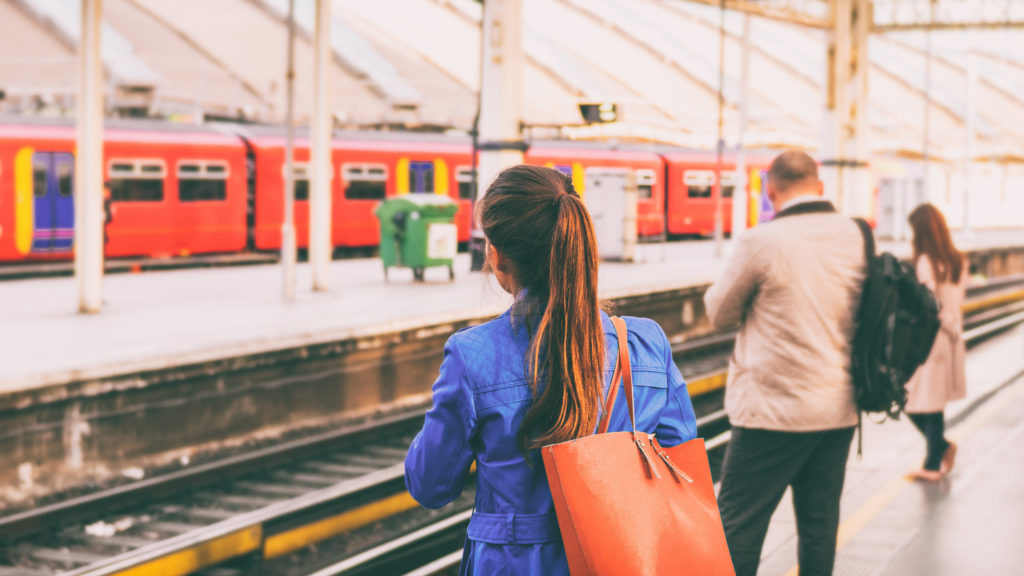A TV advertising campaign calling on commuters to ‘Get Back On Track’ is predicted to further boost passenger levels between now and Christmas. And a new, free transport app which relies on AI technology is also set to further help the process in encouraging travellers to feel safe about travelling back to the office.
TUBR, which is currently being used by thousands of Londoners, allows people to plan journeys when they are least likely to be met by crowds. It was developed by Co-founder, Dash Tabor before the pandemic after she became infuriated at having her face squeezed into a fellow-passenger’s arm-pit on her daily commute.
“We set out to solve a problem,” Dash said. “We wanted an app to help users avoid those busy periods on the London underground and we believed data would help us build a solution to make that happen.
“We wanted to be able to predict the number of people travelling through any station, platform, carriage at any minute of time. But we had a problem. The data was too sparse to use predictive technologies. We had time series data flowing into our systems, but no way to predict what would happen at each minute.
“So, to solve it, we built a long-sequence time-series machine learning algorithm that will process data with fewer data points. Now we have an algorithm that works with sparse data and can predict how busy the station will be at every minute.”
Dash said the tech is unique because, typically, predictive technology requires lots of data points.
“If a data supply isn’t big enough to use machine learning then the only technology available is able to forecast but not predict,” she continued.
“Our tech predicts movement of people and objects on time and it defines the paths people and objects take. It works by making predictions on the first 25% of time series data that arrives into a system. It allows our users to plan ahead or travel by alternative route.
“Our mission at TUBR is simple; we want to help people travel in a smarter and safer way and in a way that fully meets the needs of the modern-day commuter.
“There’s no such thing as the 9-5 anymore and people need accurate, reliable travel information 24/7. Our algorithm delivers that and puts the power back in the users hands by ensuring they have all the information they need to travel in the smartest way.
“As we come out of the pandemic, developing seamless ways to travel safely on public transport has never been more important. After months and months in lockdown, TUBR is helping provide a lifeline solution which will help get London moving safely again.”
Dash said although she is encouraged by recent upward trends in public transport use she believes there is a still lot more which could be done to get more travellers out of home-offices.
TUBR have therefore spent the past few months polling users on the issues which are putting them off returning to the Tube. More than two-thirds of rail passengers say carriages are dirtier and less hygienic than they were during lockdown.
A further one-in-six revealed many stations now rarely even had any hand sanitizers available.
The issue appears to be such a key factor in whether people will choose to return to work that many even say they would be prepared to pay more for a ticket if they were assured a clean and less crowded carriage. Of those polled 34% – more than a third – said they’d be prepared to shell out a little bit more.
TUBR found the Government’s policy on face-masks also appears to still be putting passengers off returning to the commute.
When restrictions were lifted over the Summer, the Government’s Chief Medical Officer Chris Whitty urged commuters to exercise caution saying he’d ask fellow train passengers to pop a mask on if they weren’t wearing one on a train.
But TUBR’s poll indicated just 5% of passengers feel comfortable actually doing this.
And 67% of those questioned – more than two thirds – say the concerns they have about returning to public transport had led them choosing to still work from home.
“Pre-covid, passengers may have tolerated dirty and crowded carriages – not least because commuters had little choice but to get the train to work,” Dash said.
“But new hybrid working models mean workers have far more flexibility and, clearly, many are now voting with their feet. Train companies who repeatedly hike fares need to provide a service which will give commuters the confidence to return. Passengers have even indicated they’d be willing to pay a little bit more for improved services. It’s now up to train companies to deliver.”
